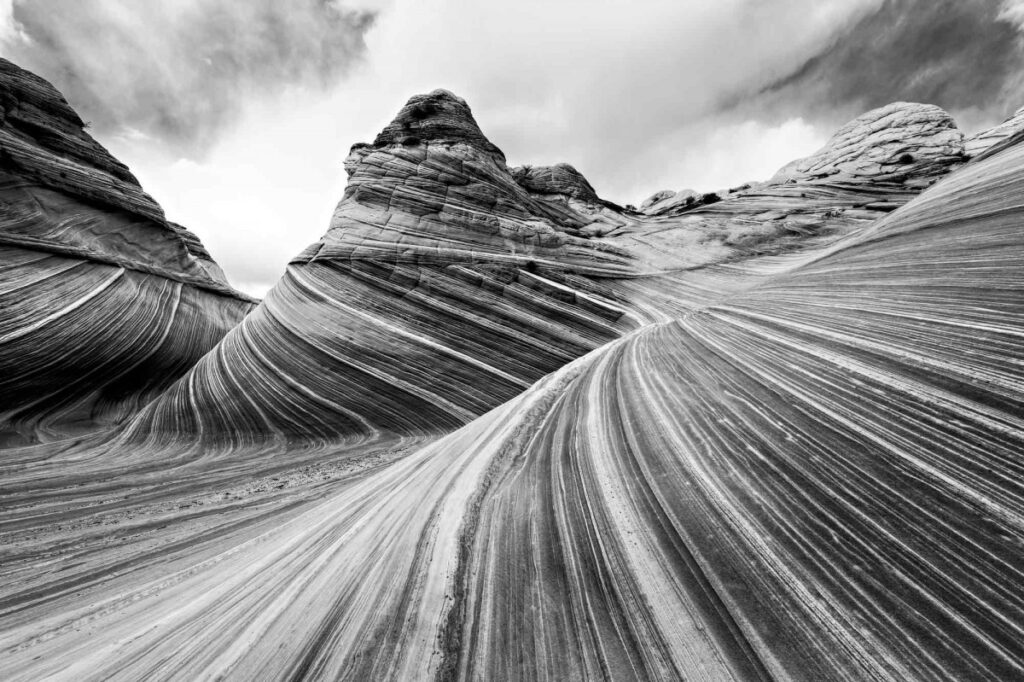


Ansel Adams

A man often considered to be the father of modern landscape photography with his famous work. Being born in 1902 he grew up in California in the sand dunes amid the golden gate. As he grew older after his family being largely effected by a volcano his father helped him pursue his creative roots and ideas even when not fitting in at school with a more traditional style of education. Progress in school until he gained a ‘legitimising diploma’ and soon after spent the majority of his time outdoors hiking, climbing and observing what was on his door step. However his photography career did not begin here so much as he taught himself to read and play music quickly becoming his occupation until he gave it up for photography, not after having learnt many important lessons of planning and patience from the music. He ever strayed too far from home, with where he ‘love of nature was nurtured’ in the Golden Gate. As his love for photography progressed using the Brownie box camera his parents gave him, he joined the Sierra Club in 1919 looking after their memorial cabin located in the Yosemite Valley in which he spent four summers growing and learning while meeting fellow conservation enthusiasts. This club gave Adam’s so much of his life not only did he meet his wife during his time there but it was essential to starting his photography career, starting with his first publishing being in the clubs bulletin. As time continued to progress the clubs yearly month long trip during the summer, quickly grew in popularity with having up to 200 attendees. Adams now being on the board of directors for the club as well as now being the trip photographer/artists, he strayed further from a concert pianist and realised he could make a living off of his work. The most life changing year in Adam’s career was 1927 when he took his first ‘visualized’ photo which became what he was known for and how he created all of his work. he only grew in popularity and fame from here as his work grew and began being featured in more and more shows all the while his new techniques and talents shone through and taught so many others. Later on in his career he met Edward Weston , who himself is a hugely important and influential photographer. This pair was quickly noticed by Group f/64 who did so much for the duo presenting shows of their work together and helping Adam’s have his first solo exhibition in a museum, although this group did not last long they brought a whole new idea to ‘straight’ or ‘raw’ photography works and looking at photography as though it what the eye would see. Time went on and Adam’s was forced to do more and more commercial work but even for this he had an unusual talent for this as well but he felt it limited his creativity that the entire reason he started photography in the first place. Adam’s was revolutionary not only for his creativity but he was a master with all the technical sides of camera, he developed the ‘zone’ system that is still used and completely changed how other photographers looked at their own work and his. He was looked up to greatly in a lot of other aspects of his life, whether it being his social company or his sheer passion for the environment and preserving it.
Visualised work
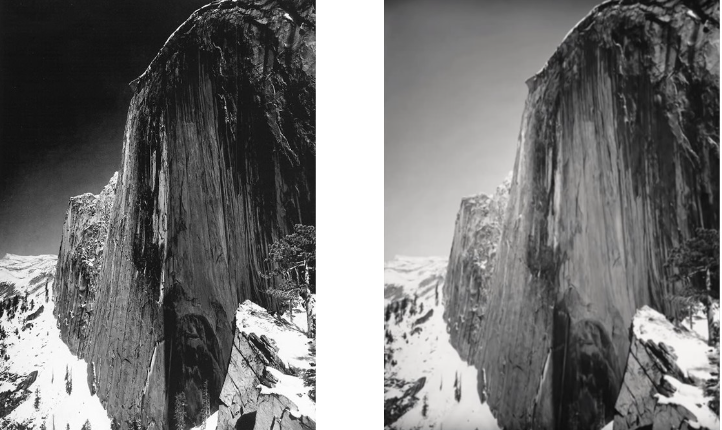
Left red filter, right yellow filter
In this example he used visualising to realise the morning sun and the yellow filter didn’t fit and in fact he went back the same afternoon and used his knowledge and picturing of the area to realise he needed to use the red lens filter achieve what he saw and pictured.
A useful technique even now, nearly 100 years later, Adam’s created was the visualisation technique. Involving the practise of imagining the final outcome of a photo before it was taken. By imagining the complete outcome of a photo before it was taken allows the photographer to slow and down and get a specific result rather than a lot of mediocre shots that we are all guilty of doing with modern cameras. Adam’s referred to this as creating with ‘the minds eye’ forcing the brain to pick and focus on what you actually want to capture by using your mind to select the most important parts of a scene according to your own eye. This helps photographers frame an image and see the see the composition before taking the photo. Accuracy to the naked human eye is so important to capture the mood and atmosphere, particularly in Adam’s case the vast parks and natural scenes were imposing and bold but taken wrong they could seem flat and uninteresting. (as the example above shows) Adam’s felt that photography was not all too different form the composition on a musical score, ‘where if the photograph was created just right, the final print should serve as a grand performance of the feeling behind his subject.’ Personal emotional response to the scene you were photographing was essential to creating an accurate, good photo. However he did feel that he often failed to convey the same impact the environment had on him in his photos, even with his photos being as impressive as they are with grand, imposing landscape filled with inspiration and romanticism.
-Pick the most impressive subject in your frame
-Choose what you put in the frame, what will look most impressive?
-What do you want to create?
-Consider lines and shadows, how do they meet?
-Look at angles, how can you compose the best photo that all the angles complement each other?
-Work with the light, where do you want the shadows and highlights?
-Consider the shapes the scene naturally creates, what grabs the viewers attention the best?
Zone system

The zone system was created by both Adam’s and a fellow colleague. This was a major breaking point in his career, as his work before hand was not what he actually wanted to create. Along with his visualisation technique this created his best work. The first example of this was the Monolith, the Face of Half Dome, Yosemite National Park, California image (as pictured above) taken in 1927 this quickly became Adam’s most famous piece of photography at the time and from then on he always used the two techniques. The idea of the zone system is to divide the photo into 11 different areas or ‘zones’ one for each section of the colour scale he created 9 grey tones and pure black and pure white which is rarely seen in landscape photography leaving the 9 different greys to use. This developed into Adam’s basic rule of develop for the highlights, expose for the shadows. This helped him create his dramatic works with bold dark grey completely contrasting the stark white and light greys. While his zone system doesn’t fit modern day photography and cameras perfectly the basic principles of it are still very useful, teaching, improving our photography a great deal. However Adam’s base rule of, expose for the shadows, develop for the highlights, with modern day cameras and technology is the opposite we need to make sure we aren’t over exposing images and instead it is much better to under expose an image as then it is still recoverable. Similarly to how an over exposed image on film was better recovered than an under exposed one.
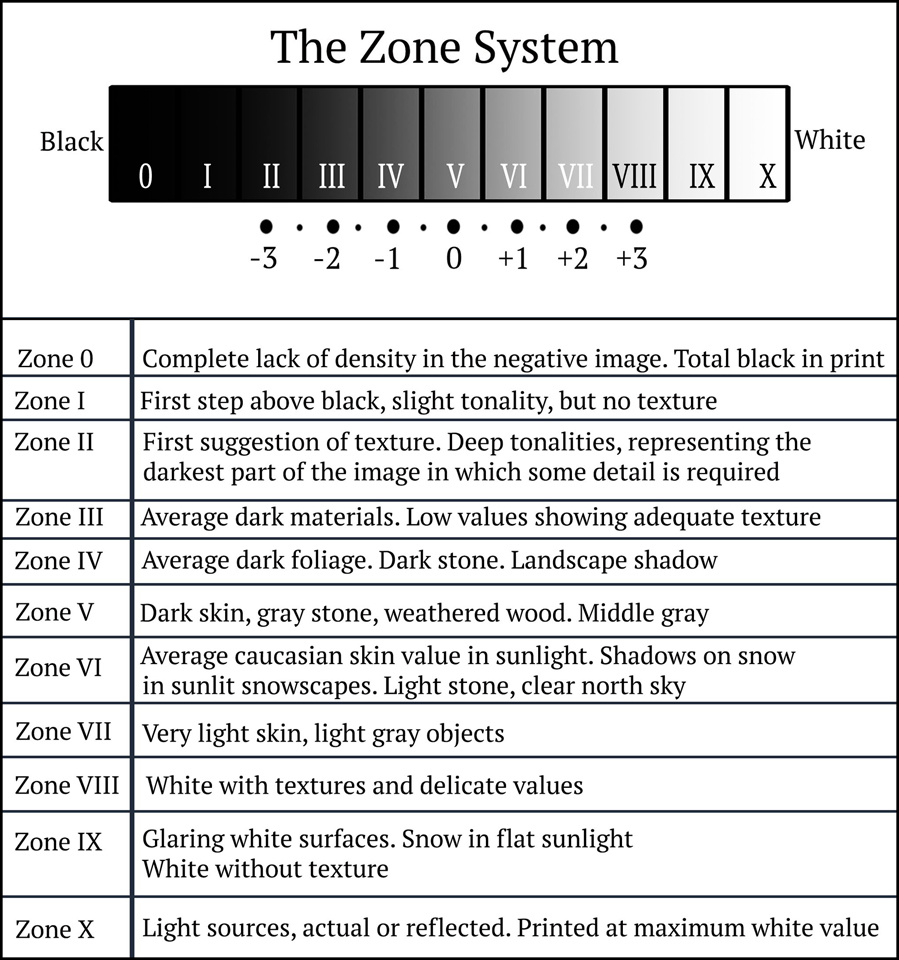
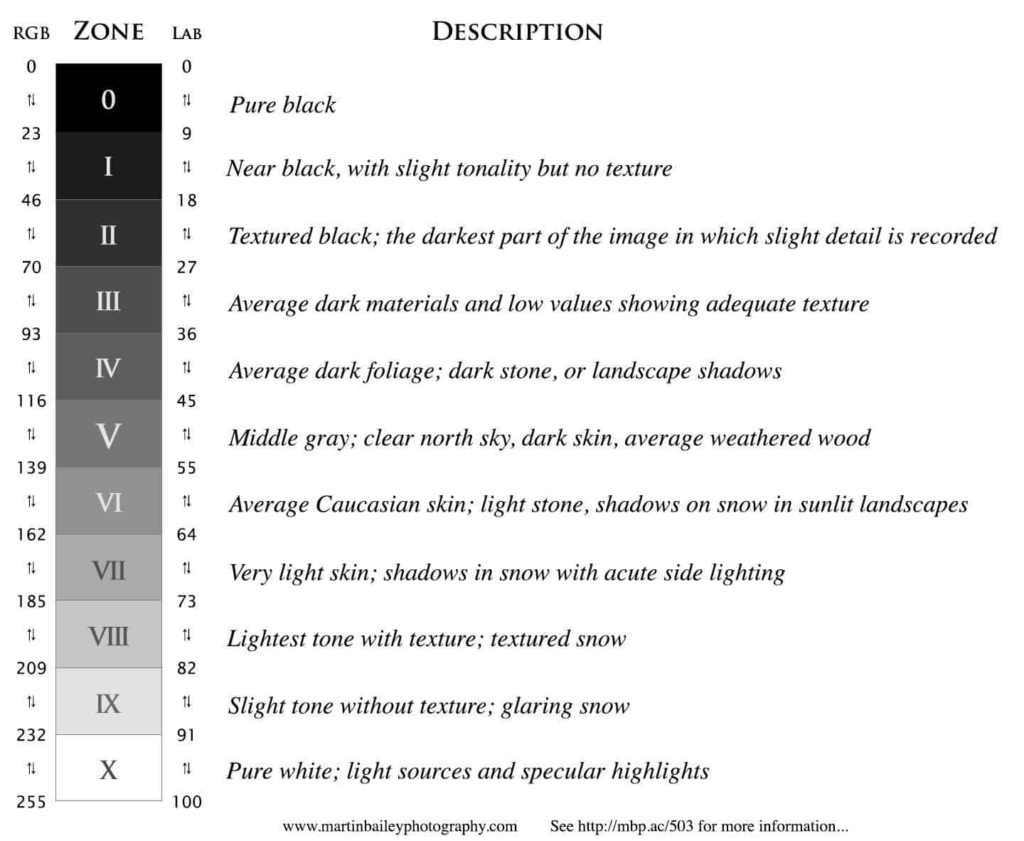
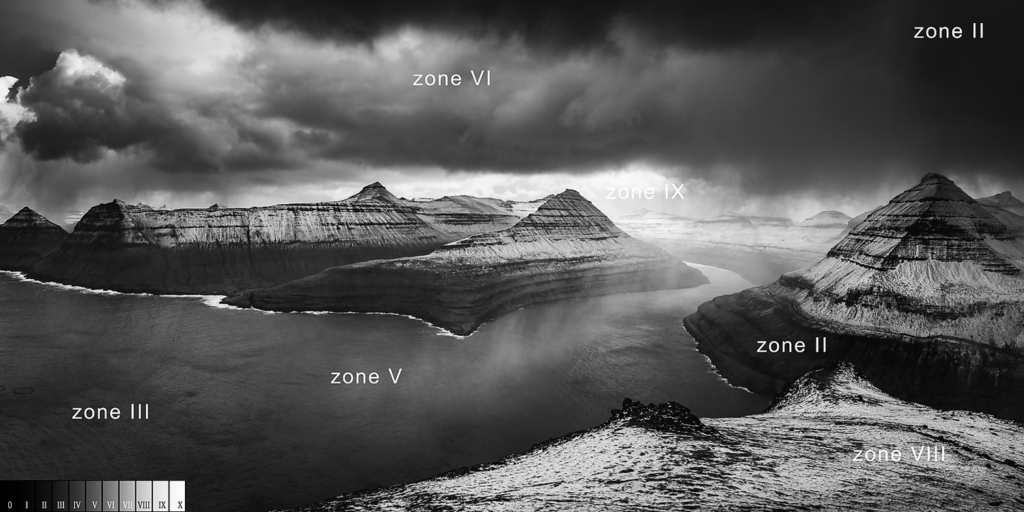
Image Analysis

Although I have previously mentioned this photo in this post, it still remains my favourite of Adam’s work. Essential to Adam’s development as the photographer we know him as now this was his first photo using his both visualising and the zone system. By combining the two techniques he has created this dramatic, foreboding photo that simply takes peoples breath away and is a large part of the sublime in romanticism. This particular version of the photo was taken using the afternoon sun and a red lens filter after failing to capture what Adam’s pictured when he saw the scene as earlier that day. The stark contrast makes this photo interesting to the viewer, from colour 11 pure black (on Adam’s zone scale) to colour 1 pure white this photo has it all. The sheer face of the Half Dome paired with the sloping landscapes creates this feeling of adrenaline and admiration for the scene that is the Yosemite Park. Interestingly enough at the time Adam’s hadn’t yet defined the zone system and this was the photo that became the image that helped him name his techniques of photographing from feeling.
The photo starts with having ‘pure black’ in the top left corner with a small fade into lighter grey form the light hitting the rock face of which some details within that are obscured by the deep colour. As the photo continues downwards the juts and rough texture of the rock face become more apparent as the colour lightens up into a soft grey. Just below the rock face the ground is coated in ‘pure white’ with a smattering of dark grey shapes form the trees poking through the snow. The actual rock face itself has two parts the majority of the large part takes up most of the frame having a gradient of colour from ‘pure black’ to soft grey as the photo continues downwards. Curving at the top contrasting the dark colours with a soft line the rock gets rougher and shaper as the gradient lightens downwards. In the bottom right corner of the frame there is a smaller rock face breaking up what could have otherwise appeared a flat image. This smaller rock face is a lot lighter in colour even having some ‘pure white’ blending nicely with the background coated in snow.
This particular image was special for Adam’s as not only did it make the photographer we know now, help create his two world known techniques but it also was used by the Sierra Club to campaign for the environmental movement and the protection of the Yosemite National Park. Of which was incredibly special for Adam’s having created his life and career in the particular park. I think the image the love Adam’s had for the park incredibly well but also the respect he had for it, the vastness of of nature and absolute power nature has over people. Similarly to the romanticism movement and the sublime, Adam’s captured the power and force of nature itself, simply how small we are in comparison.
